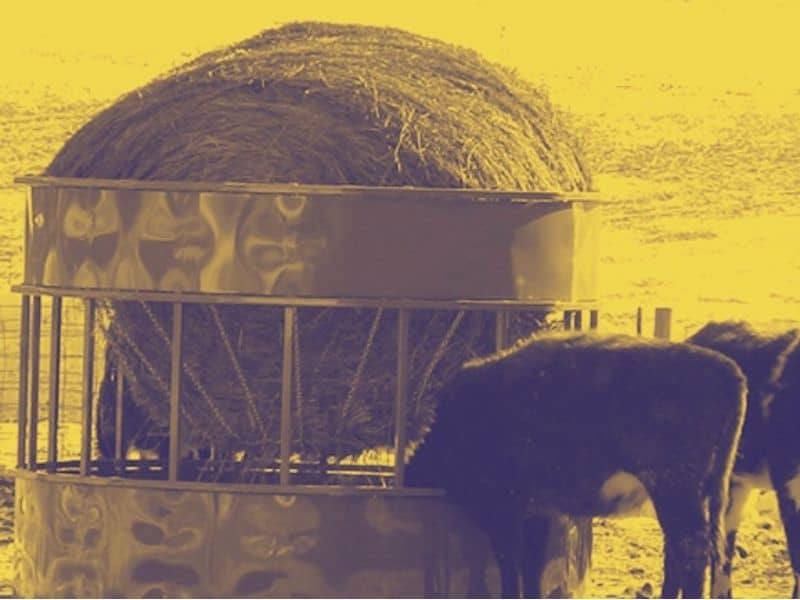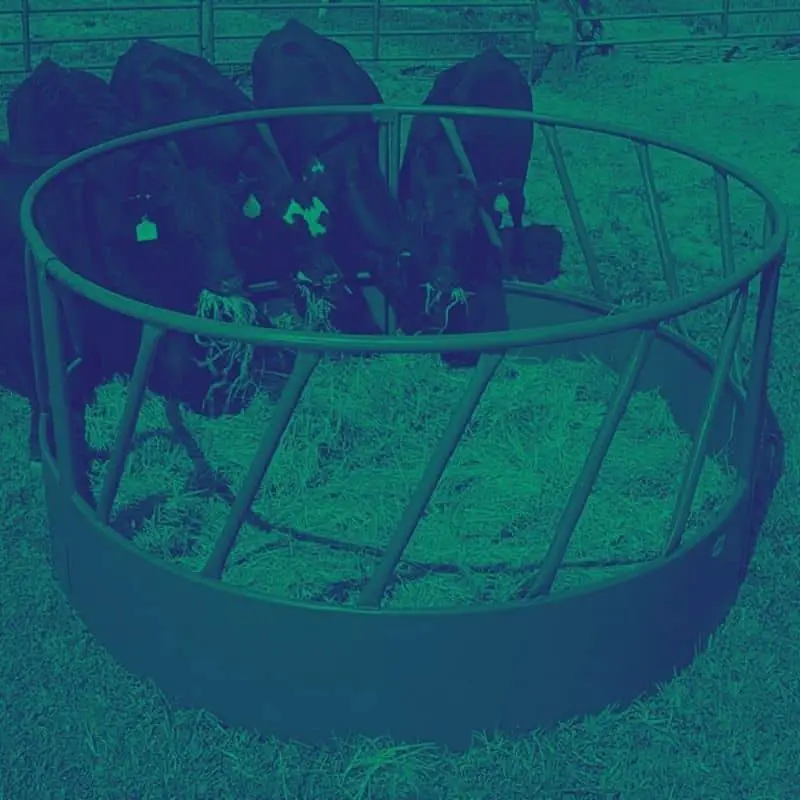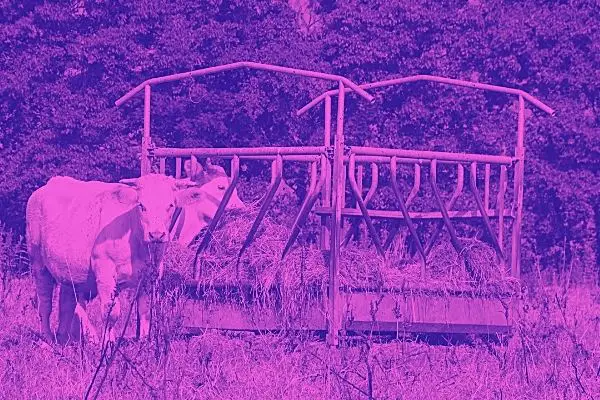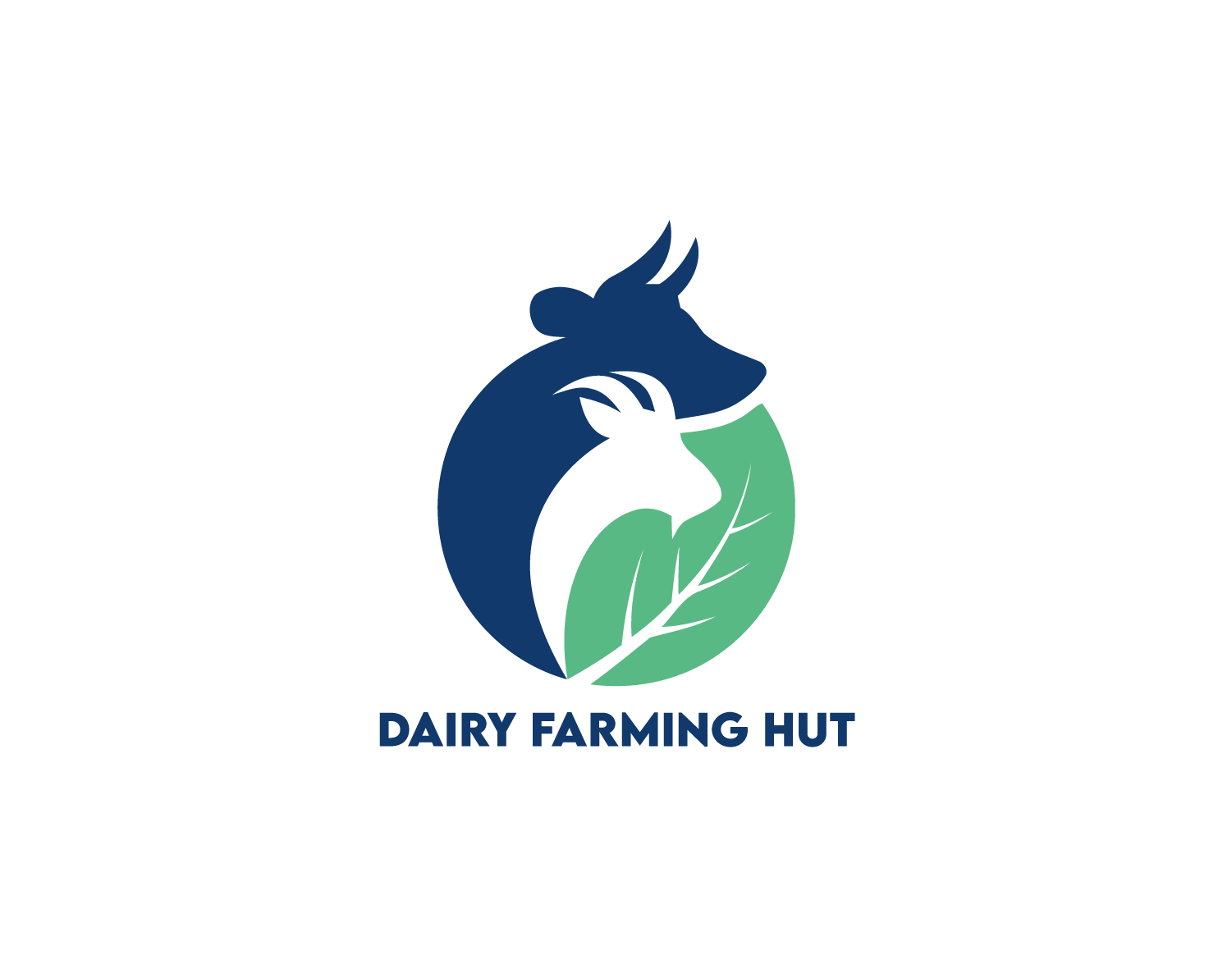Keeping livestock such as cows can be an expensive business if you aren’t adequately prepared. One of the most common problems experienced by dairy farmers worldwide is that the cows waste vast amounts of hay, which can quickly leave you with a rather hefty feeding bill.
But it does not need to be that way; there are things that you can do to prevent your cows from wasting hay. One of these things is to use a hay feeder, which has been proven repeatedly to reduce waste and protect your bank balance.
In this article, we will be looking at the benefits of using hay feeders and the different types of hay feeders you might choose.
How Do Cows Waste Hay?
One of the most considerable problems with cows that are offered hay without a hay feeder - sometimes referred to as a hay ring or rack, is that much of the food can and does end up on the floor where the cattle will trample it.
Naturally, the cows won’t want to eat hay, which is soiled and squashed - much in the same way we wouldn’t want to eat food from the floor. Therefore, it ends up being wasted, and you end up having to purchase more. Short of making your hay, which can be time-consuming, there is only one real solution - investing in hay feeders.
Do You Know...
When you use a hay feeder, you stand to lose only 7-9% of the total bale, compared to up to 45% when offering hay outside of a hay feeder.
Using one of the many types of hay feeders will benefit you greatly in terms of how much hay is lost. But there are many more hay feeder benefits.
Hay Feeder Benefits
One of the first things you will need to consider when investing in hay feeders is that there will be an initial outlay with some round hay feeders costing hundreds of dollars. But that isn’t to say that you won’t break even pretty quickly through the amount of money you will save on buying additional hay.
With that in mind, let’s take a look at some of the best hay feeder benefits, and you may be surprised to learn that they go far beyond just wasted hay.
Better Weight Management of Cows
One of the most significant advantages of using a hay feeder is that you will be better able to manage your cattle’s weight. This is because feeding in the way has benefits where digestion is concerned - when they are allowed to free eat, your cow’s digestion may not be as balanced as it should be. In contrast, this slower form of feeding will allow for more controlled digestion, which in turn gives you a healthier, happier cow whose weight is well-maintained.
Also Read: What Are The Best Ways To Manage Cow Manure?
improve the overall efficiency of feeding hay
Furthermore, the stress of continually supplying food for your herd will be lifted. Cows will continue to eat provided that there is a food source. However, when you use a hay feeder, they will have limited access, so you will notice that the food lasts much longer - one less thing for you to worry about. Of course, you must provide enough food for each cow. As a general rule, cows will eat around 26 lbs of food per day, so you must factor this in and calculate an appropriate amount of hay for your animals.
Improve Hay Availability for the Whole Herd
Another excellent thing about using a hay feeder is that you can place them in several locations around the field. This will prevent specific cows from exerting dominance over others, which can happen if all cows are expected to eat from the same place. The more dominant animals will find a spot they like, but the remainder of the feeders will be available to the more submissive members of the herd, ensuring that everyone is fed equally.
Types Of Hay Feeders
It stands to reason that the type of hay feeder you will need will depend on various factors, and what might work well on your farm may not work well on someone else’s.
There are several types of hay feeders, but three are most common and considered to be the most effective.
Tapered Cone Hay Feeder
Widely accepted to be one of the most effective hay feeders for improving waste reduction. The tapered cone hay feeder is, as its name suggests, a tapered cone shape filled with openings the animals can access the hay.

Studies show that this type of hay feeder produced only 3.1% of wasted hay; this is a vast improvement on the 45% that might be wasted when omitting the use of a hay feeder altogether.
The Hay Manager offers an excellent tapered cone feeder and provides durable feeders that will feed your cattle for many years to come.
Round Hay Feeder
A round hay feeder is circular and can be used to feed round bales to your cattle. They are similar in price to tapered cone feeders, and they have excellent durability.
In terms of how much hay is wasted, you can expect a round hay feeder to waste around 6.1% of each bale. While this is slightly higher than the tapered cone hay feeder, there is no denying that this is still very impressive when compared to not using one at all.

Provided that the round hay feeder is lifted off the ground, the animals will eat the bottom layers first, which further helps prevent waste since taking it from the top can cause spillages.
Several brands offer round hay feeders, but one of the most well-loved is Ritchie, whose innovative take on this type of hay feeder has farmers all around the world getting excited.
Rectangular Cradles Hay Feeder
A rectangular cradle hay feeder looks similar to a rectangular cage, inside which the hay bale is placed. This is ideal if you use rectangular bales, but it is essential to point out that this type of feeder is known to produce the highest waste level at around 11%.

One of the great benefits of this type of hay feeder is that it can feed many cattle and has room for far more hay than other types.
The Ritchie high-density feeder is one of the most reputable brands with more than 140 years of farming experience.
Hay Feeder Tips
We understand that you will want to get the most out of your hay feeder, and simply throwing in the hay and leaving it is not an option. As we mentioned earlier, you should ensure that the hay feeder is slightly elevated off the ground if you want to improve waste further.
In addition to this, you should be sure to provide a non-porous base under the feeder, such as gravel, as this will prevent the lower layers from becoming too moist to eat.
Finally, be sure to rotate the location of your hay feeders. If they are left in one place for too long, this will cause the surrounding ground to become trampled and damaged. Furthermore, it will prevent high levels of bovine waste from accumulating in one location.
Conclusion
A hay feeder can come in many forms, but they all have one thing in common - they can drastically lower the amount of hay the cows waste. It is not uncommon for cattle, who are not fed using a feeder, to waste up to 45% of each bale which will cost you a lot of money.
While a hay feeder will require an initial investment, this outlay will soon be regained through more significant waste reduction.
